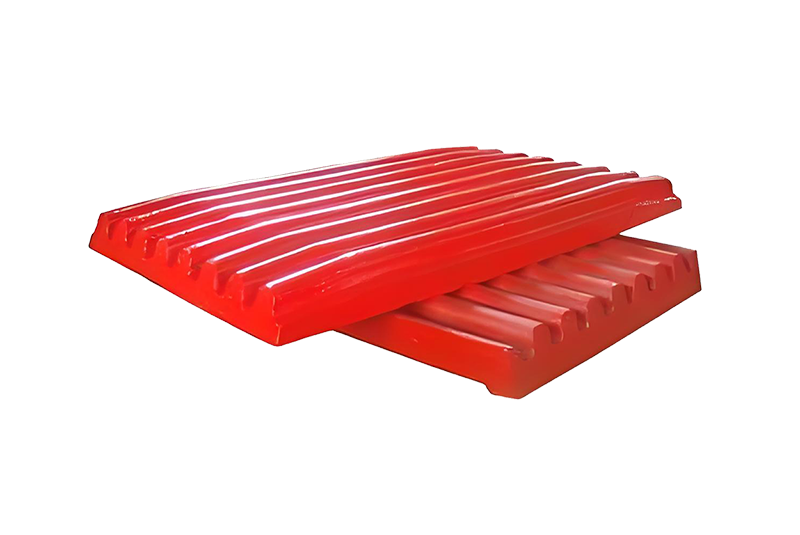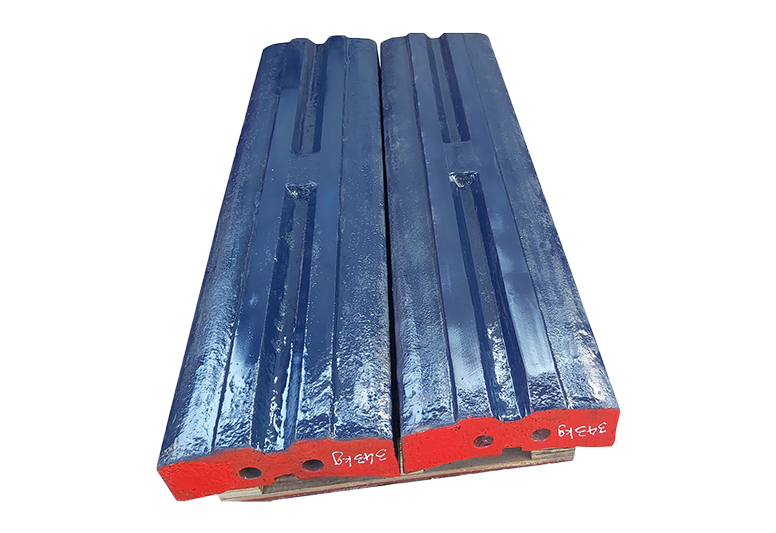In crushing and mining operations, wear parts are vital to the performance and longevity of equipment. Two of the most critical wear parts in crushers are jaw plates and impact bars, each designed to perform specific functions under different conditions. Understanding the differences between these two types of wear parts is essential for manufacturers and equipment operators to make informed decisions, reduce downtime, and optimize the efficiency of their production lines. This article will break down the key differences between jaw plates and impact bars, discussing their material composition, benefits, drawbacks, and best uses.
Wear parts are components in crushing and material handling equipment that undergo regular wear and tear due to constant exposure to abrasive materials. These parts directly affect equipment efficiency, productivity, and maintenance costs. The primary role of wear parts is to maintain the quality of the crushing process, ensuring that materials are efficiently processed and reduced in size.
Common wear parts in crushers include:
Jaw plates
Blow bars
Impact bars
Hammer plate
Concave and mantle parts (bowl liner)
High-quality wear parts are crucial for optimizing production, reducing downtime, and extending the life of equipment. The effectiveness of jaw plates and impact bars plays a key role in achieving these goals.

Jaw plates are essential wear parts used in jaw crushers. They form the surface that crushes and breaks down materials when they are fed into the crusher. The plates are typically made from high-manganese steel or alloy steel, designed to withstand the tough crushing forces exerted on them during operation.
High wear resistance: Jaw plates are built to endure substantial wear and tear, especially when processing hard, abrasive materials.
Shape and design: Jaw plates are often smooth, corrugated, or toothed, depending on the nature of the material being crushed.
Material hardness: The hardness of the material being processed plays a significant role in the rate of wear of jaw plates.
Durability: Jaw plates are designed to handle primary crushing applications, processing tough materials like rock, minerals, and ores.
Longevity: Due to their strong materials and robust construction, jaw plates offer a long service life, reducing the frequency of replacements.
Customization: Jaw plates can be customized to suit different crusher models and operational needs, ensuring a tailored fit for various production processes.
High maintenance: While jaw plates are durable, they require regular inspection and maintenance to prevent failure.
Limited for high-impact applications: In applications involving highly abrasive or large materials, jaw plates may wear out faster than impact bars.

Impact bars are used primarily in impact crushers to absorb and withstand the force generated by materials during crushing. Made from materials like high-chromium iron or alloy steel, impact bars are designed to handle high-velocity impact and abrasive conditions.
Impact resistance: Impact bars are engineered to withstand the intense forces produced in secondary and tertiary crushing processes.
Shape and design: Impact bars are often longer and shaped to absorb energy from large, fast-moving materials.
Material composition: The high-chromium or alloy steels used in impact bars provide exceptional toughness and wear resistance in high-impact applications.
Ideal for secondary crushing: Impact bars excel in secondary and tertiary crushing stages, where materials have already been partially reduced in size.
Reduced downtime: With excellent impact resistance, impact bars generally require less frequent replacement than other wear parts, minimizing equipment downtime.
Adaptability: These bars are highly adaptable, capable of handling a range of materials, from hard rocks to softer aggregates, making them a versatile choice for different operations.
Wear under extreme conditions: While impact bars are excellent in high-impact environments, they can wear quickly when exposed to highly abrasive materials.
Cost of replacement: Although impact bars last longer in certain conditions, their replacement can be costly due to the material composition.
Jaw Plates: Typically used for primary crushing operations, where materials like rocks, ores, and minerals are crushed into smaller, manageable sizes. Jaw plates provide the crushing force through a compressive motion.
Impact Bars: Primarily used in secondary and tertiary crushing stages, where the materials are subjected to high-velocity impacts to break them down further.
Jaw Plates: Built for high wear resistance, especially in primary crushing, they perform best when handling hard, abrasive materials. However, they are more prone to wear and tear in applications involving heavy impacts.
Impact Bars: More resistant to impact forces, making them suitable for high-speed, high-impact environments. However, they may wear faster when exposed to very abrasive materials.
Jaw Plates: Provide efficient crushing for tough materials in the initial stages, with excellent durability. However, they may require more frequent maintenance due to the stress of primary crushing.
Impact Bars: Offer high efficiency in secondary crushing with the ability to process materials at high speeds. They are particularly effective in applications requiring high-impact force.
Jaw Plates: While durable, jaw plates require regular monitoring and maintenance to ensure continued performance. Over time, they may need to be replaced due to the wear they incur in primary crushing.
Impact Bars: Tend to have a longer service life in high-impact environments, reducing downtime. However, their replacement costs can be higher, especially in extreme conditions.
Jaw plates and impact bars each play crucial roles in crushing operations. While jaw plates are best suited for primary crushing with durable, hard materials, impact bars excel in secondary crushing applications, absorbing high-velocity impacts and offering greater versatility. The right choice depends on factors such as material hardness, crushing stage, and cost considerations.
For expert guidance on selecting the right wear parts for your equipment, Haitian Heavy Industry offers consultations and high-quality jaw plates and impact bars tailored to your needs. Contact us today to optimize your crushing process and maximize your equipment's lifespan.